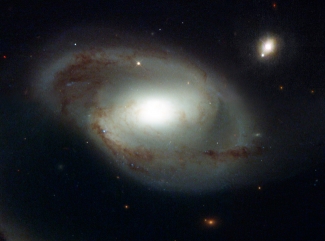What did Fellow Jeff Linsky come home with from a 2006 SINS conference?
He arrived at JILA with the realization that quasars twinkle for much the same reason stars twinkle: Light from both quasars and stars pass through turbulence that mixes up the light rays, causing the light to vary in intensity, or twinkle. However, the stars we see every night twinkle because of turbulence in the Earth’s dynamic atmosphere, which changes hundreds of times a second.
In contrast, quasars twinkle relatively slowly, changing in intensity over several hours. And — here’s what triggered Linsky’s aha moment at the conference — they twinkle more slowly or more rapidly at certain times of the year. Sitting in the audience in Socorro, New Mexico, on a warm spring day, he suddenly understood that what makes quasars twinkle are turbulent clouds only a few light years away from us in the local interstellar medium.
Linsky recognized that interstellar clouds couldn’t possibly be the whole story, however. These clouds (and any turbulence within them) are virtually stationary. Something else must be moving fast enough to cause twinkling, and that something would be us. Earth races around the Sun at a speed of ~30 km/s. Twinkling patterns result from the interaction of Earth’s speed and position with the irregular shape of the turbulence in the local interstellar clouds.





